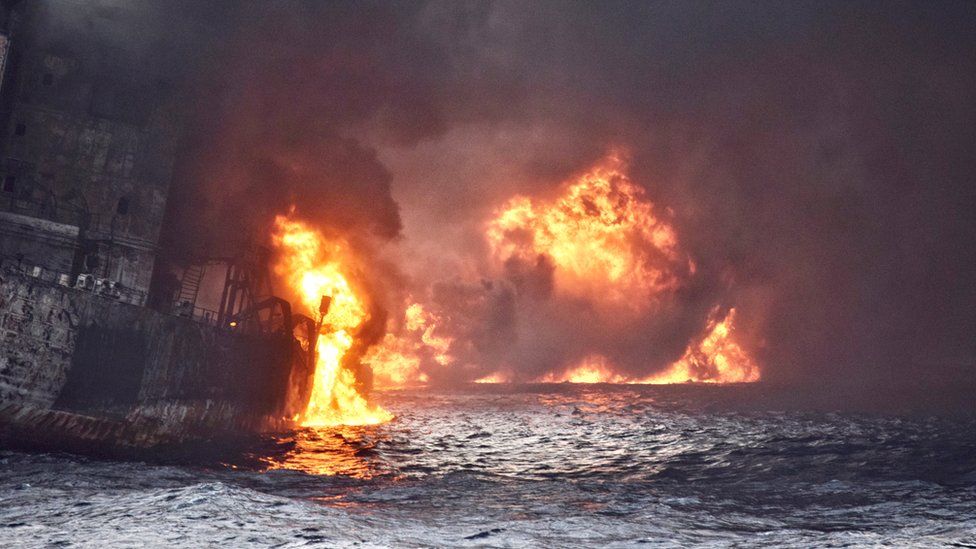Sunken tanker Sanchi: Four oil slicks seen, says China
- Published

An oil spill from an Iranian tanker that sank off China has spread into four separate slicks covering an area of 100 sq km (39 sq miles), say Chinese authorities.
The Sanchi was carrying 136,000 tons of ultra-light crude oil when it collided with another vessel 260km off Shanghai on 6 January.
It burned for a week before exploding and sinking on Sunday.
The crew of 32 are all confirmed or presumed dead.
Earlier satellite imagery had shown just two oil slicks.
But the latest figures from China's State Oceanic Administration, which monitored the area on Wednesday, said there were now four, ranging in size from 48 sq km to 5.5 sq km.
Both the crude oil that was carried on the Sanchi and the fuel that was used to power the vessel could cause devastating damage to marine life.
Condensate oil, the ultra-light crude oil carried on the ship, differs from the thick black oil slicks usually associated with a spill.
It is toxic, low in density and considerably more explosive than regular crude.
Most condensates are also colourless and generate a toxic underwater slick that is almost invisible from the surface.
China's Ministry of Transport had on Wednesday announced that a salvage team had located the vessel at a depth of 115m (377ft). It said it was preparing to send underwater robots to explore the area.
The ministry added that a marine patrol ship had arrived at the site, and crew had begun assessing ways to detect leaks and stop the flow of oil.
- Published15 January 2018
- Published14 January 2018
- Published13 January 2018
- Published8 September 2010